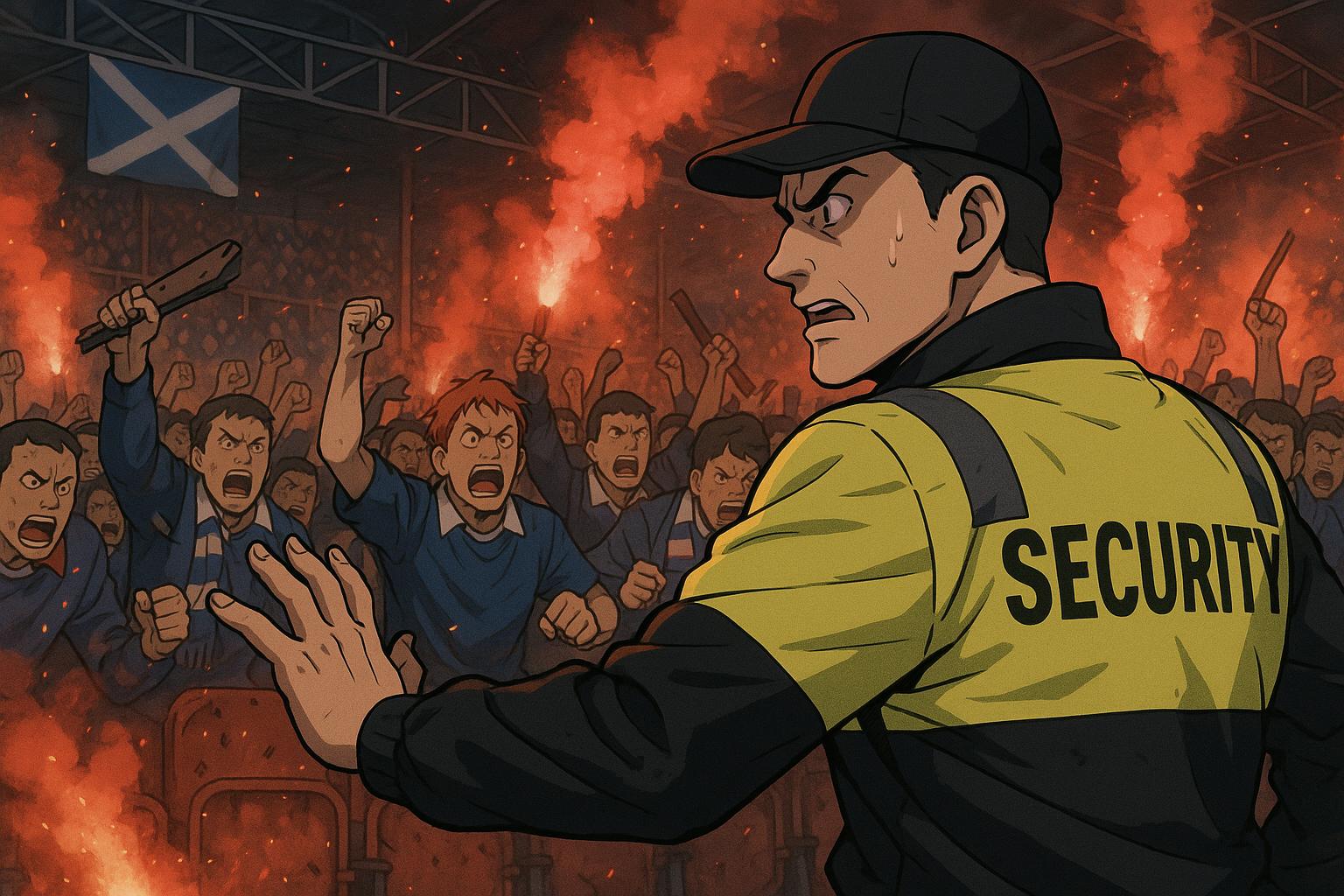Almost four years have passed since the cacophony of chaos erupted outside Wembley during the summer of 2021, when England faced Italy in the European Championship final. That day, marked by an unsettling display of violence and rowdiness, is now etched into the annals of British football as one of its darkest moments. Amidst the mayhem, vivid images emerged, including a fan openly using cocaine before surreptitiously entering the stadium — a grim reflection of the increasingly toxic atmosphere surrounding modern football culture. Shockingly, this individual later confessed, with distasteful pride, to consuming 20 cans of Strongbow and three grams of cocaine prior to the match, indicative of a troubling trend.
In learning from the appalling scenes at Wembley, authorities in England, led by Baroness Louise Casey, conducted a thorough review. The findings revealed that sports officials had narrowly avoided tragedies on that day, prompting a suite of recommendations aimed at ensuring such an event would never repeat itself. While Scotland may not have witnessed disorder on the same scale — no 100,000-strong crowds surging against stadium doors — recent events suggest it is facing its own alarming levels of fan violence and misconduct that require urgent attention.
A recent, distressing incident occurred at Tannadice, where Aberdeen defender Jack MacKenzie suffered a severe injury after being struck by a chair thrown by a fellow supporter. The gravity of this incident underscores the intensifying disorder prevalent in Scottish football, which has been on display throughout the season. Just weeks before, a pyro display during a play-off match between Partick Thistle and Ayr United resulted in injuries to young fans. Additionally, a St Johnstone supporter suffered a fit at Hampden due to similar pyrotechnics during a Scottish Cup semi-final, while Celtic's goalkeeper endured glass bottles hurled at him during an Old Firm match.
Moreover, a recent celebration by Celtic fans turned chaotic as drunken dissidents heaved sectarian chants through the streets of Glasgow. This behaviour, culminating in business closures and public disturbances, starkly highlights the reckless indulgence of a minority of fans who seem unrepentant. Football authorities in Scotland have often been accused of shirking their responsibility, opting instead to ignore the escalating issue of fan violence, leaving a pressing question of accountability hanging in the air.
The catastrophic potential of this rising tide is not lost on those invested in the welfare of the sport. Alastair Blair of the Scottish Football Supporters’ Association articulated a chilling warning, stating, “We are heading towards a point where someone is going to be killed inside a stadium in Scotland.” He emphasised that attending a football match should not invoke fear for personal safety — a right that should be inherent for all supporters. The increasing incidents of pyrotechnics, coupled with widespread drug use, create an environment dangerous not only for players but also for fans quietly there to enjoy the game.
Research has indicated that drug use, particularly cocaine, has outstripped alcohol consumption as the primary safety concern at Scottish matches. A study from the University of Stirling shows a stark rise in cocaine among fans, with interviews revealing this has led to heightened violence and disruption. Alarmingly, it’s estimated that 50 to 75 per cent of certain fan groups are often under the influence of cocaine during matches, with reports of users openly taking the drug in stadiums, contrasting sharply with prior norms surrounding alcohol consumption.
Academics and professionals alike are intensifying their calls for action. Geoff Pearson, a senior lecturer in criminal law, previously warned that this behaviour is now almost ritualistic among certain supporters, who prioritise a transgressive experience over the sport itself. These insights are critical as the discussion around strict liability emerges — a concept that is gaining traction among football authorities as they grapple with their apparent inability to manage this crisis effectively.
Increasingly, the Scottish football community is pressing for change, acknowledging that mere discussion is insufficient amid this rising tide of disorder. As the football landscape in Scotland finds itself at a crossroads, it remains to be seen how long it will take authorities to implement meaningful reform to ensure safety and restore dignity to the sport.
Reference Map
- Core discussion on football disorder and comparison with Wembley incidents.
- Context on drug use within Scottish football, citing specific incidents.
- Updates on efforts by Scottish football officials addressing pyrotechnics.
- Discussion on recent legislation and arrests related to pyrotechnics.
- Case studies on fan behaviour and legal actions undertaken.
- Data on the rise of drug-related issues at Scottish football matches.
- Overview of ongoing issues concerning pyrotechnics and urgent calls for action.
Source: Noah Wire Services
